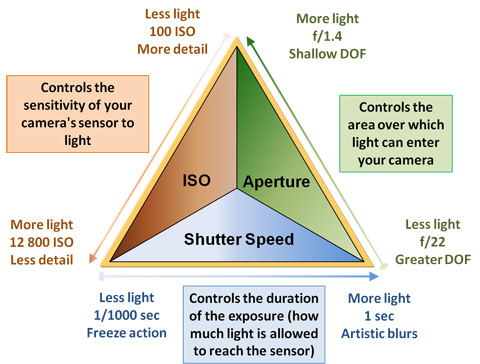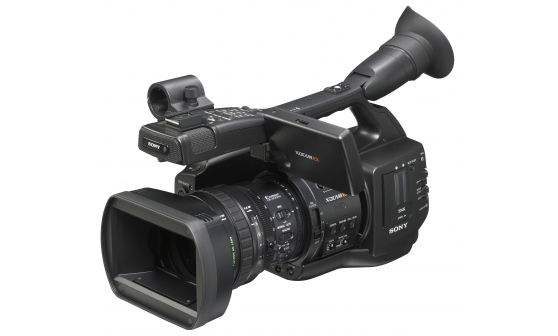
In simpler terms, the higher the number of your ASA/ISO, the more sensitive it it towards light. So basically, if you use higher ASA/ISO numbers you will get a picture with lots of noise.
This then lead us towards the exposure triangle.

What is Aperture?
Aperture is like the iris. It controls the amount of light transmitted into the sensor of the camera. Lower f/stops number means Shallow Depth of Focus and more light. While, Bigger f/stops number means Greater Depth of Focus and less light. Each f/stops either halves or doubles the amount of light entering the camera. An easier way to put this is Lower Aperture = More light and Higher Aperture = Less Light.
Aperture is like the iris. It controls the amount of light transmitted into the sensor of the camera. Lower f/stops number means Shallow Depth of Focus and more light. While, Bigger f/stops number means Greater Depth of Focus and less light. Each f/stops either halves or doubles the amount of light entering the camera. An easier way to put this is Lower Aperture = More light and Higher Aperture = Less Light.
What is Shutter Speed?
Shutter speed controls the time for how long a shutter is open. This controls the duration of the how much light is allowed to enter and reach the sensor. It is responsible for creating dramatic effects by either a freezing or blurring action. If the shutter speed is low (for example, 1/100), it can create an effect called "motion blur". This is where moving objects appear blurred along the direction of the motion.We then got to look at the two cameras which we will mostly be using during the course.
Sony PMW-EX1R HDCAM

Canon XF305

We were then introduced to Gain.
Gain is an electronic amplification of the video signal. This means that the signal is boosted electronically, adding more voltage to the pixels on the imager causing them to amplify their intensity and brighten the image. This voltage increase is measured in decibels (dB). A +6dB Gain is equal to a 2x increase in the signal. A +12dB Gain is equal to 2 x 2 or 4x increase in the signal. A +18dB is a 2 x 2 x 2 or 8x increase in the signal. When we express Gain as dB, every +6dB increase represents another doubling the signal. Another way to think of it as F Stops.
+6dB = Adds 1 F Stop of light
+12dB = Adds 2 F Stops of light
+18dB = Adds 3 F Stops of light
If +6dB is like adding an F Stop, +3dB is like adding 1/2 an F Stop of light and +2dB is like adding 1/3 an F Stop. Information supplied by Bob Diaz via DVXuser.com
EDIT
From what I can tell after borrowing and playing with the EX1, I wasn't really fond with the focus as it didn't show the blur in the background when I wanted the focus to be on the object in front of the camera and the focus ring was a bit tight where I couldn't get a smooth feeling on it.
This is an excellent blog, Sylvester – demonstrating good extracurricular research. Keep up the good work.
ReplyDeleteAny notes on shutter angle (compared to shutter speed)?